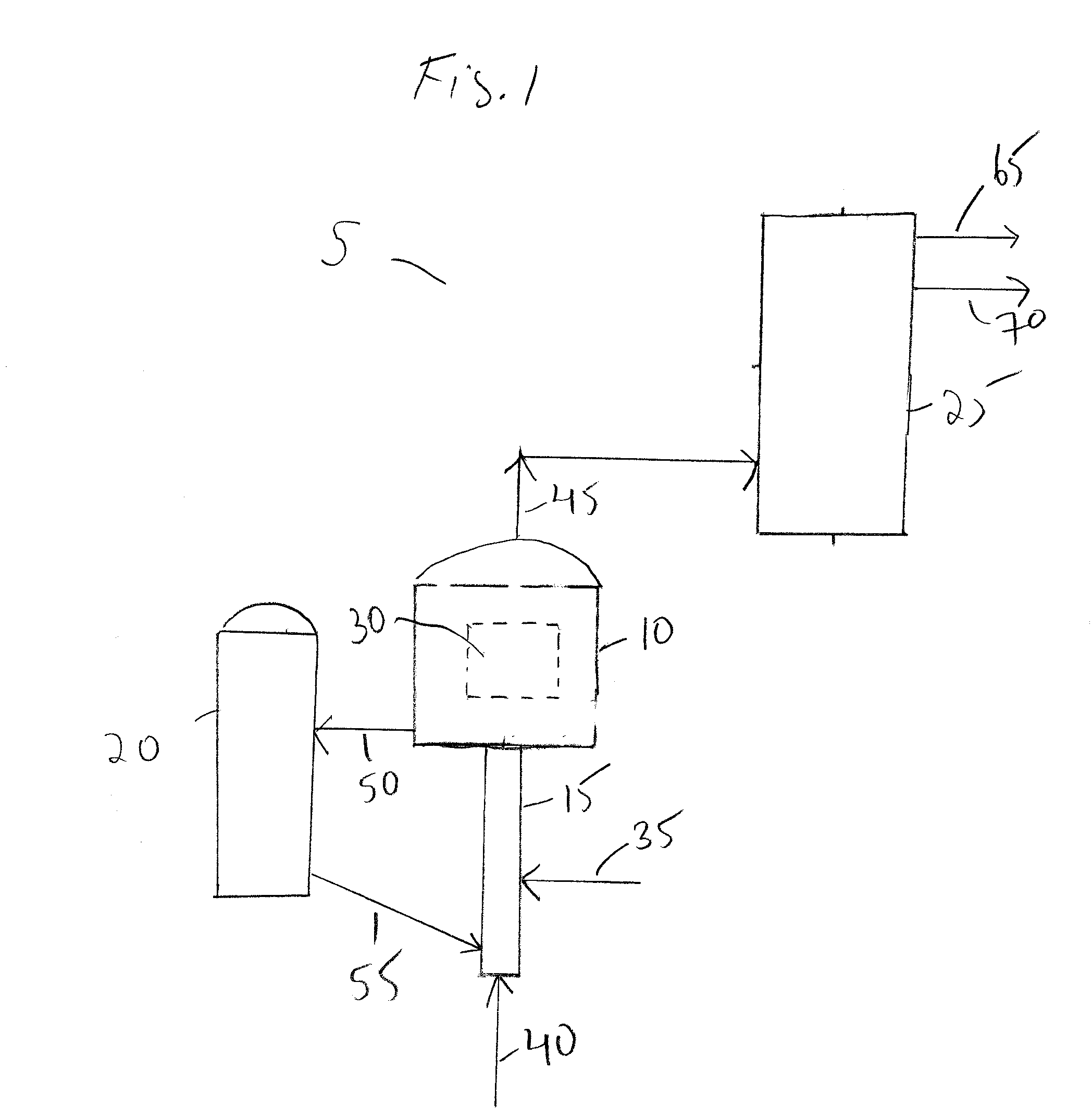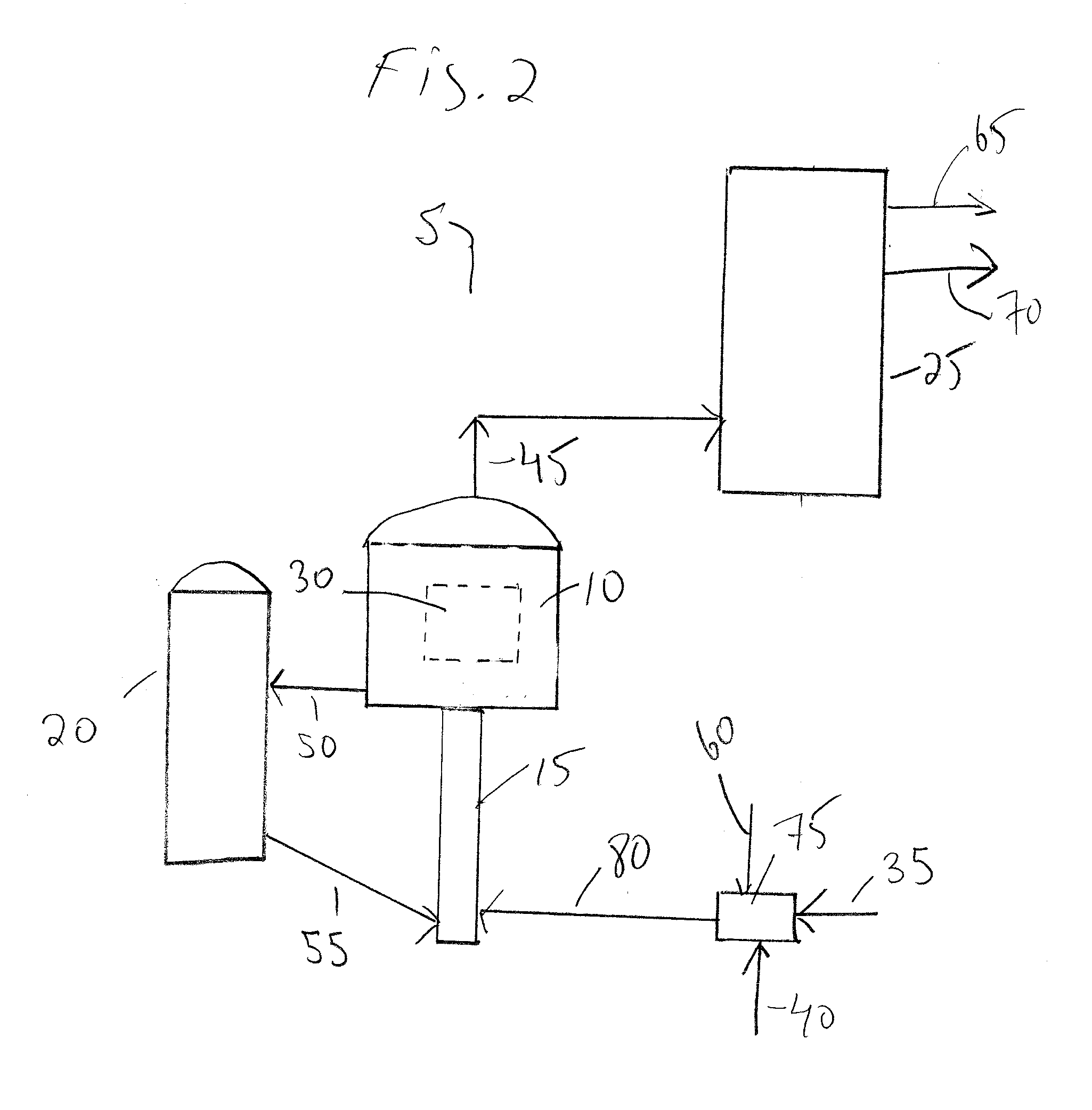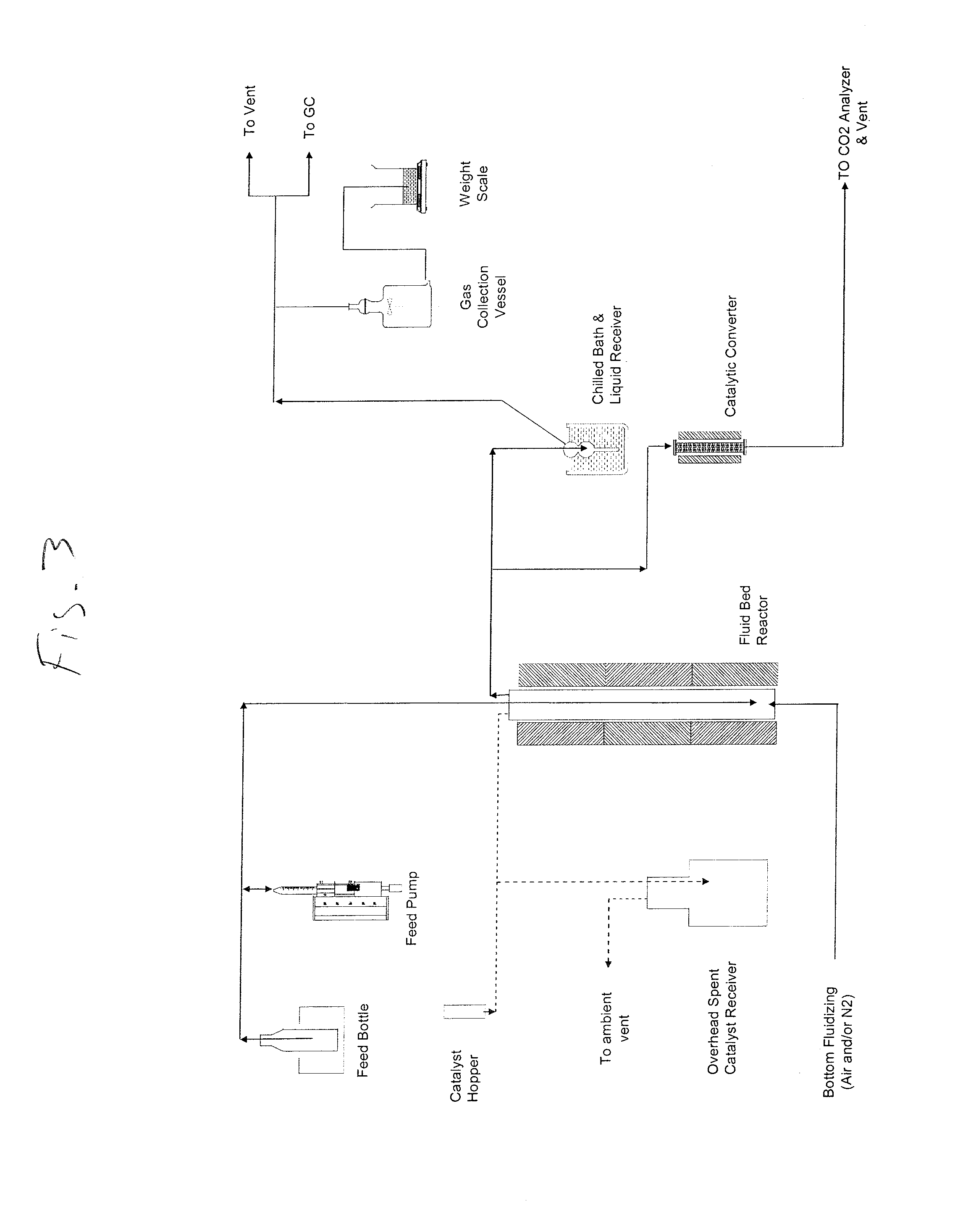Deep Deoxygenation of Biocrudes Utilizing Fluidized Catalytic Cracking Co-Processing with Hydrocarbon Feedstocks
- Summary
- Abstract
- Description
- Claims
- Application Information
AI Technical Summary
Benefits of technology
Problems solved by technology
Method used
Image
Examples
example 1
[0042]The catalyst was deactivated using steam deactivation for 20 hours at 788° C. with 100 mol % steam. The catalyst was composed of kaolin, aluminum oxide, zeolites, and silicon dioxide. Performance testing took place using the Short Contact Time Resid Test Unit, a commercially available fluidized bed test unit described in available literature (Baas et al., Proc NAM 2008, Houston, of North Am. Cat. Soc.). 20 wt. % of pyrolysis oil (49.7 oxygen wt. %) was blended with a typical oxygen-free fossil fluid catalytic cracking feed (86.0 wt. % carbon, 13.8 wt. % hydrogen, and 0.2 wt. % nitrogen) and stirred at 75° C. in a closed vessel before injecting into the unit (3 ml of feed). Tests were performed at 600° C. with a contact time of 1 second. Liquid product was collected in a receiver at −6° C. and analyzed. Subsequent analyses were performed using standard equipment, all calibrated as subscribed. Table I below shows the product yield distribution as a weight percent of the total fe...
example 2
[0043]The catalyst had 80 wt. % of a first catalyst and 20 wt. % of a second catalyst. The first catalyst was composed of kaolin, aluminum oxide, zeolites, and silicon dioxide, and the second catalyst was composed of aluminum oxide, silicon dioxide, magnesium oxide, and zinc sulfate. The combined catalysts were deactivated using steam deactivation for 20 hours at 788° C. with 100 mol % steam. Performance testing took place using the Short Contact Time Resid Test Unit (Baas et al., Proc NAM 2008, Houston, of North Am. Cat. Soc.). 20 wt. % of pyrolysis oil (49.7 oxygen wt. %) was blended with a typical oxygen-free fossil fluid catalytic cracking feed (86.0 wt. % carbon, 13.8 wt. % hydrogen, and 0.2 wt. % nitrogen) and stirred at 75° C. in a closed vessel before injecting into the unit (3 ml of feed). Tests were performed at 600° C. with a contact time of 1 second. Liquid product was collected in a receiver at −6° C. and analyzed. Subsequent analyses were performed using standard equip...
example 3
[0044]The catalyst had 80 wt. % of a first catalyst and 20 wt. % of a second catalyst. The first catalyst was composed of kaolin, aluminum oxide, zeolites, and silicon dioxide, and the second catalyst was composed of aluminum oxide, magnesium oxide, and vanadyl sulfate. The combined catalysts were deactivated using steam deactivation for 20 hours at 788° C. with 100 mol % steam. Performance testing took place using the Short Contact Time Resid Test Unit (Baas et al., Proc NAM 2008, Houston, of North Am. Cat. Soc.). 20 wt. % of pyrolysis oil (49.7 oxygen wt. %) was blended with a typical oxygen-free fossil fluid catalytic cracking feed (86.0 wt. % carbon, 13.8 wt. % hydrogen, and 0.2 wt. % nitrogen) and stirred at 75° C. in a closed vessel before injecting into the unit (3 ml of feed). Tests were performed at 600° C. with a contact time of 1 second. Liquid product was collected in a receiver at −6° C. and analyzed. Subsequent analyses were performed using standard equipment, all cali...
PUM
 Login to View More
Login to View More Abstract
Description
Claims
Application Information
 Login to View More
Login to View More - R&D
- Intellectual Property
- Life Sciences
- Materials
- Tech Scout
- Unparalleled Data Quality
- Higher Quality Content
- 60% Fewer Hallucinations
Browse by: Latest US Patents, China's latest patents, Technical Efficacy Thesaurus, Application Domain, Technology Topic, Popular Technical Reports.
© 2025 PatSnap. All rights reserved.Legal|Privacy policy|Modern Slavery Act Transparency Statement|Sitemap|About US| Contact US: help@patsnap.com



